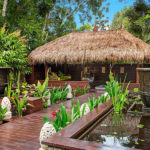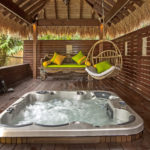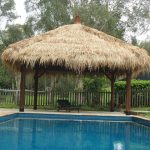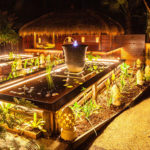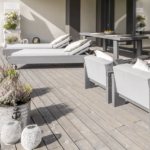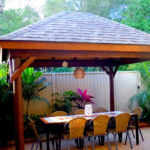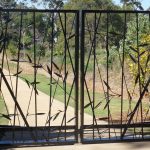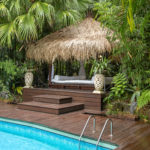Huts are purpose-built structures built of readily available materials such as wood, leaves, stones, rocks and clay. Existing in almost all cultures, huts are generally designed to favour high airflow conditions.
The origin of Bali huts
Bali huts originate from the Indonesian island of Bali and are characterised by thatched roofs and a bamboo or coconut wood structure. Due to the abundance of these local materials, these huts became a popular structure for Bali’s people. Their open design makes them particularly suited to Bali’s tropical climate and high wind conditions. Both cheap to construct and extremely sturdy, these huts offer shade and shelter year-round.
The composition of a Bali hut
The thatched roofs of Bali huts are traditionally made of Alang Alang, a blade-like grass native to East and Southeast Melanesia, India, Asia, Australia, Micronesia, Eastern and Southern Africa. The structures of these huts, on the other hand, are made from either coconut wood or bamboo
Bali huts today
Today Bali huts can be made from a range of different timber, however it must be noted that all Australian timber construction must be treated against termite and borers. While natural Alang Alang is the most traditional material, you can purchase a range of different thatching materials, including fire retardant thatching and synthetic leaf thatching to suit your needs. You can add engraved wooden fascia boards and posts to add a touch of elegance or add a ceiling fan to the Bali hut’s roof to increase cooling during summer.
If you’re looking for a traditional style Bali hut for your garden, then contact East Coast Bali Huts and Gazebos today. Based on the Gold Coast and catering to the entire East Coast, we can help you find the Bali hut of your dreams.


